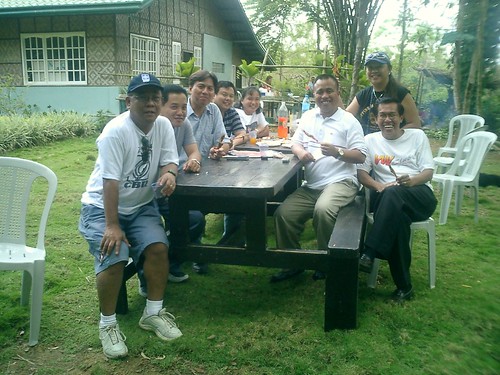
We mean this quite literally. Last Friday, we ran a "political map of support/non-support" on the front page, showing the Philippines awash in a sea of green.
Green was the color we assigned to provincial governors who voiced support for President Macapagal-Arroyo after the crisis erupted; the green provinces include the likes of Eastern Samar, headed by Gov. Ben Evardone, who did not campaign for the President last May but is now the spokesperson for the pro-Arroyo governors.
The fact that vote-rich provinces like Pangasinan and Batangas are now counted in the President's column, despite having broken for opposition candidate Fernando Poe Jr. last year, may strike us at first as yet another manifestation of turncoat politics. But we would be wrong.
The fact is, many local executives (last Friday's story also carried a tally of mayors for or against the President) have rushed in to defend the center because they believe the future of the new periphery is itself at stake. Call it the modern paradox of local power.
The spectacle of local executives pledging support to a President under siege is nothing new, of course; in the last days of the dictatorship, many governors and mayors sided with Ferdinand Marcos. The difference is, they had no real power apart from access to Malacañang.
Today, there is a real movement of political power to the provinces, set in motion in the last decade by possibly the most consequential single piece of legislation since the fall of the dictatorship: the Local Government Code.
The grant of real powers to local governments did not only give them access to a guaranteed income or allow them an unprecedented measure of control over their own affairs. It also encouraged local executives to dream of real autonomy from the center; more precisely, it allowed them to re-imagine the center.
To be sure, local executives continue to realize that it would be better to have an ally in the Palace (and by extension, in the budget department). Politics, after all, is still addition. But if we focus all our attention on this transactional relationship between Malacañang and the local governments, we would miss out on the real story.
Local governments have become a real source of power in their own right.
This is what we mean when we say the political map has truly been redrawn. The center holds in part because it is anchored on the periphery; that is what all those green-shaded political units in last Friday's map signify.
Many local executives do not only appreciate the political fact that the President literally speaks their language; they also recognize that Ms Arroyo is not a threat to them. In the black-and-white world of politics, she is on their side. The promise of greater devolution explicit in her campaign platform last year and implicit in her development plan is incentive enough to come to her defense. The idea that Metro Manila can once again mandate an interruption in the course of the country's political life only adds motive to incentive.
We wish to be clear: The "political map of support/non-support" is not a measure of public opinion. That would require another map altogether, showing, for instance, greater support for a federal system in Mindanao, greater support for the President in the Visayas, and greater support for impeachment in Metro Manila.
But the governors' map is telling in revealing ways. It shows us that the decision to invite local executives to the President's State of the Nation Address was not only meant to pack the Batasan with Charter change advocates but also an acknowledgment of their real power. And it signals to us that a hundred years after emerging local leaders like Sergio Osmeña from Cebu and Manuel Quezon from Tayabas contested Manila's dominance, there is a new vitality in the countryside.







No comments:
Post a Comment